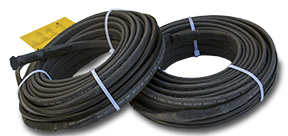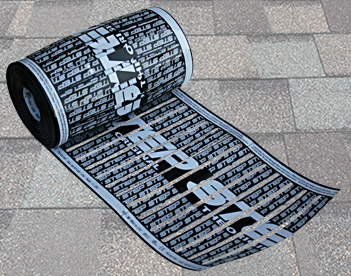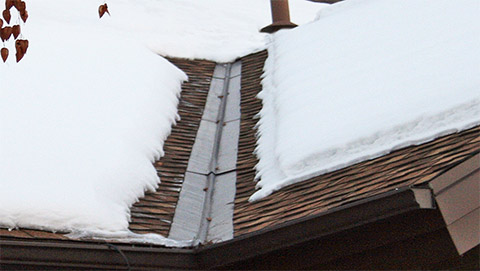The Industry’s Most Trusted Roof Heating Solutions
It’s that time of year again. Ice and snow are causing hazardous conditions everywhere, including our homes and businesses. One area of your home you may forget about this winter is your roof. As important as it is, the roof is often an overlooked area during the winter, and not maintaining it can lead to costly repairs. From broken gutters and downspouts to water damage from leaks that can cause mold and mildew, a damaged roof can make your winter season frustrating, cold, and expensive.
An efficient roof deicing system is a great long-term investment in maintenance and safety for any home or business owner, especially when coupled with industry leading customer service and professional system design services provided by Warmzone. Warmzone offers state-of-the-art roof heating systems, including industry leading RoofHeat trace cable and low-voltage RoofHeat STEP to meet the needs of any project.
Warmzone’s roof deicing systems are easy to use and easy to install. These systems have three components: A heating element, a power unit, and an activation device.

RoofHeat self-regulating heat trace cable is an affordable, easy-to-use roof deicing option that is typically installed in gutters, downspouts, or along the roof eaves to help prevent ice dams and icicles from forming. Installation is simple. Determine the length of cable needed and then install it in the gutters and downspouts, and/or attach to the shingles with roof clips.
The self-regulating cable features an irradiated conductive core that increases the heat output as the outside temperature falls and decreases the heat output as the temperature rises. This unique construction makes it durable, safe, and extremely energy efficient.
RoofHeat STEP heating elements feature thin polymer that can be rolled out and cut on site, and even stapled or nailed through when installed under the roof shingles. Each power unit for the low-voltage heating element is connected to control specific areas of your deicing system and monitor the heating elements’ output. These units step down high voltage to low voltage (60 V or less) to safely and efficiently melt snow and ice.

The final component of the low-voltage system is the activation device. While several activation device options are available, Warmzone recommends its state-of-the-art RoofHeat STEP Touch Thermostat. The Touch thermostat works by using a remote sensor to determine temperature to activate the system when it is needed. This activation device is low-profile and features an auto-dimming LED display that interfaces with the outdoor sensor. The user-friendly controller makes operation of your system a cinch. Like the RoofHeat trace cable, the RoofHeat STEP heating element is also self-regulating. This function allows the system to operate safely and at peak performance.

With superior performance and state-of-the-art components, an advanced roof deicing system from Warmzone offers many benefits for your home or business. The first and most obvious is that maintaining your roof prevents costly water or structural damage to your home or business. Heavy snow and ice dams can build in chronic trouble spots on your roof; such as a north-facing valley or roof edge, and block the water from draining properly. This can lead to a compromised roof that leaks, causing damage from your ceiling to your floor, and may lead to mold and mildew growth inside the home.
Maintaining your roof also increases the safety of your home and business. With a RoofHeat system there will be no more worrying about heavy icicles falling and injuring people or creating extra ice on the sidewalk that may lead to falls and severe injuries. Another great benefit of a roof deicing system is the maintenance-free nature of the system. Once installed, the systems don’t require any regular maintenance, so aside from the operation costs, there are no other yearly expenses associated with having a system.
When it comes to operating costs, Warmzone’s self-regulating systems operate extremely efficiently, resulting in low operation cost. While utility prices may vary depending on your location, on average a 300 square foot roof costs around $.35 an hour to operate, making them affordable for any consumer. The automated operation of Warmzone’s RoofHeat STEP and RoofHeat trace cable systems also allows for minimum operation time, decreasing your operating costs. In fact, Warmzone’s heat trace cable system can run up to 30 percent less than other radiant deicing systems, making it a safe, efficient, low-cost choice.
One of the biggest benefits of a RoofHeat deicing system is the versatility. You can install each system on its own, or if you have a tricky area that needs special consideration, you can use both RoofHeat trace cable and RoofHeat STEP elements. When purchasing a top-of-the-line system from Warmzone, you also receive industry leading customer service to help you pick the RoofHeat products that best fit the needs of your project. Warmzone has design specialists to help you every step of the way, assuring your system is perfect for your home or business, as well as free installation training and support.
Still have questions about RoofHeat systems? Contact a Warmzone customer service specialist at 888.488.9276, or check out warmzone.com’s roof deicing pages for information on products and installation today!
